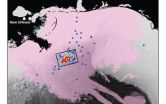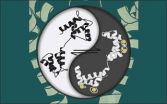(Press-News.org) It's an often-agonizing challenge facing any parent of a child with autism: How can I help my son or daughter socialize with his or her typically developing peers? The solution, SF State's Pamela Wolfberg found, may lie in a different type of playgroup that focuses on collaborative rather than adult-directed activities.
A new study shows that "Integrated Play Groups," or IPGs, developed by Wolfberg over several years, are effective in teaching children with autism the skills they need to interact with their peers and engage in symbolic play such as pretending. In IPGs, adults help children with autism and their typically developing peers engage in playful activities of mutual interest, but do not direct the play themselves. That sets them apart from more traditional interventions, according to Wolfberg, a professor of special education and communicative disorders.
"Children learn much better how to play through interactions with peers than they do from adults, because adults are not like children anymore," she said. "We can definitely have wonderful interactions with kids through play, and we should. But this is qualitatively different."
Wolfberg and her colleagues studied 48 children with autism during free play activities, in which they did not know the other children, twice before and once after those same children participated in an Integrated Play Groups program with familiar peers. They found that, following the IPG intervention, the children's ability to interact with kids they did not know and to engage in pretend play had risen dramatically, indicating the IPGs were successful in providing them with transferable social and symbolic play skills.
Children with autism, according to Wolfberg, tend to have a "very restrictive play repertoire," in which they may have unusual interests and repeat the same activity, most often by themselves. The goal of Integrated Play Groups is to move children from engaging in lower levels of play, such as simply banging something, to engaging in more symbolic play that involves reciprocal interaction with peers.
"The earthquake-rescue theme is the most popular in San Francisco, and we had a little boy just like that, who had an affinity to bang things," she said. "So the kids came up with this idea of building cardboard blocks and having an earthquake, and he was the construction worker. He was able to participate in other kids' interest, build something more elaborate and have a whole fantasy about it."
The success of IPGs is an opportunity for parents, educators and therapists seeking to help children with autism in socializing with their peers. In addition, the IPG model also teaches typically developing children about autism and lets them learn how to form friendships with kids who might play, communicate or relate differently.
"This is what families want for their kids," added Wolfberg. "This flips around the idea that kids with autism are incapable of socializing or incapable of pretending. They have the same innate drive to participate with peers and to engage in playful experiences, but what has been happening is we have not been able to tap into their potential."
Future research will involve collaboration with assistant professor Betty Yu and graduate students to look more closely at how Integrated Play Groups can help children with autism better communicate with their typically developing peers, another challenge they face. Wolfberg also has been adapting the IPG model to be used in other countries, including Saudi Arabia, where she traveled this fall.
INFORMATION:
"Integrated Play Groups: Promoting Symbolic Play and Social Engagement with Typical Peers in Children with ASD Across Settings" by Pamela Wolfberg, Mila DeWitt, Gregory S. Young and Thanh Nguyen was published online Sept. 18 in the Journal of Autism and Developmental Disorders and can be read at http://link.springer.com/article/10.1007/s10803-014-2245-0/fulltext.html.
Where's the remaining oil from the 2010 Deepwater Horizon disaster in the Gulf of Mexico?
The location of 2 million barrels of oil thought to be trapped in the deep ocean has remained a mystery. Until now.
Scientist David Valentine of the University of California, Santa Barbara (UCSB) and colleagues from the Woods Hole Oceanographic Institution (WHOI) and the University of California, Irvine, have discovered the path the oil followed to its resting place on the Gulf of Mexico sea floor.
The findings appear today in the journal Proceedings of the National Academy ...
The first images of a nova during its early fireball stage--when it ejects material, and gases expand and cool--show that this activity is more complicated than predicted.
That is the conclusion, published in the current issue of Nature, from a research collaboration led by Georgia State University Astronomer Gail Schaefer that includes 37 researchers (many who are National Science Foundation (NSF)-funded) from 17 institutions. The researchers observed the expanding thermonuclear fireball from a nova that erupted last year in the constellation Delphinus.
"This is ...
The uncontrolled growth of cancer cells arises from their ability to hijack the cell's normal growth program and checkpoints. Usually after therapy, a second cancer-signaling pathway will open after the primary one shuts down — creating an ingenious escape route for the cancer cell to survive. The answer, say Case Western Reserve researchers, is to anticipate and block that back-up track by prescribing two drugs from the start. The results of the project, led by Ruth Keri, PhD, Professor and Vice Chair Department of Pharmacology, and Associate Director for Basic Research ...
1. Study: Prompt isolation of symptomatic patients is key to eliminating Ebola
Isolating the sickest Ebola-infected individuals before they progress into their late phase of illness can effectively eliminate the Ebola epidemic in Liberia, according to a modeling study being published in Annals of Internal Medicine. Currently, West Africa is in the midst of the largest and deadliest Ebola epidemic ever recorded. Liberia has been especially hard-hit with more than 3,500 infections and 2,000 deaths in the past three months. Researchers developed a random transmission model ...
COLUMBUS, Ohio – The drug erlotinib is highly effective in treating advanced-stage lung cancer patients whose tumors have a particular gene change, but when the same drug is used for patients with early-stage tumors with the same gene change, they actually fare worse than if they took nothing. A study by researchers at The Ohio State University Comprehensive Cancer Center – Arthur G. James Cancer Hospital and Richard J. Solove Research Institute (OSUCCC – James) and at Cincinnati Children's Hospital might show why.
Oncologists use erlotinib to treat ...
SPOKANE, Wash.—Americans are in a world of hurt.
Nearly one in five U.S. adults are in pain most every day for spells of three months or longer, according to an analysis by Jae Kennedy, professor of health policy and administration at Washington State University Spokane. The estimated 39 million adults in persistent pain outnumber the residents of California.
Previous studies have said so much pain costs hundreds of billions of dollars a year in lost productivity and health care. And that doesn't take into account pain's psychic toll.
"A sizeable portion of American ...
Chicago, October 27, 2014—The Associated Press-NORC Center for Public Affairs Research today released the results of a major new study and related reports on the recovery from Superstorm Sandy in 12 New York and New Jersey neighborhoods hard hit by the 2012 storm.
It is the second AP-NORC study that has focused on the aftermath of Superstorm Sandy, with findings that emphasize the important role social factors play in a neighborhood's resilience: the ability of people and their social systems to survive, adapt and continue moving forward after a disaster. Funding ...
Researchers at McGill University have succeeded in simultaneously observing the reorganizations of atomic positions and electron distribution during the transformation of the "smart material" vanadium dioxide (VO2) from a semiconductor into a metal – in a timeframe a trillion times faster than the blink of an eye.
The results, reported Oct. 24 in Science, mark the first time that experiments have been able to distinguish changes in a material's atomic-lattice structure from the relocation of the electrons in such a blazingly fast process.
The measurements were ...
Influencers trump belief that doctors adopt a new therapy by watching others use it
Surprisingly long road from FDA approval to use by doctors
New technology is like an influential colleague -- opinionated but not too bossy
Doctors need to be reminded every five to seven days
CHICAGO --- Doctors are more likely to try a new therapy when they are persuaded to do so by an influential colleague, reports a new Northwestern University study whose findings on adopting innovations also have relevance for business, education and research.
The authors have used the ...
A common protein plays a different role than previously thought in the opening and closing of channels that let ions flow in and out of our cells, researchers at Johns Hopkins report. Those channels are critical to life, as having the right concentrations of sodium and calcium ions in cells enables healthy brain communication, heart contraction and many other processes. The new study reveals that a form of calmodulin long thought to be dormant actually opens these channels wide. The finding is likely to bring new insight into disorders caused by faulty control of these ...



